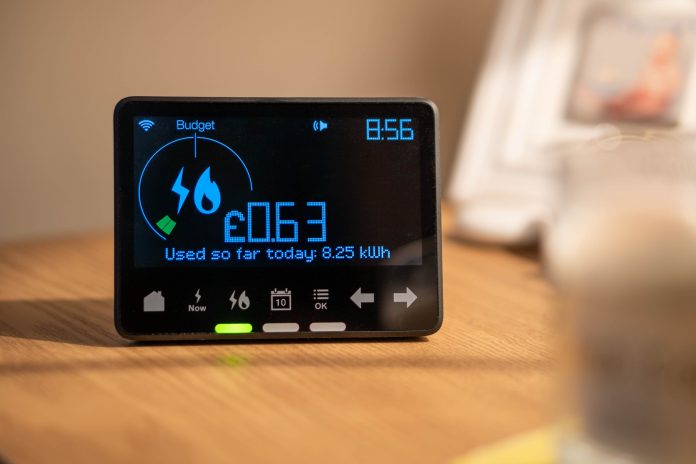Matthew Trewhella, Managing Director of Kensa Contracting, explores the application of ground source heat pumps and the wider benefits for the climate with the decarbonisation and electrification of heat
The rapid recent decarbonisation of the electricity grid now means that the large scale electrification of heating via ground source heat pumps shows significantly more promise than the decarbonisation of the gas grid.
One of the biggest disruptors facing utilities is the very likely shift away from gas towards the electrification of heat via heat pumps. This brings challenges to the grid infrastructure on the electrical side and challenges to the business models for the gas suppliers.
Having recently committed to a 2050 net-zero carbon target in an effort to limit global warming, reduce pollution and improve air quality, UK Government recognises that electrically-powered low carbon ground source heat pumps have a critical role to play in providing a more sustainable heating infrastructure to rival and replace the gas grid.
The smart revolution unlocking a low carbon future
There is a slightly unfortunate trend towards calling anything that is Wifi enabled “Smart”. For instance, it might be more convenient to program a thermostat using your phone/tablet rather than pressing buttons on it but that doesn’t necessarily make it Smart. For the revolution to be truly smart, we need to make sure that internet-connected devices are performing optimisation autonomously – without much input from the users.
If done correctly, the smart revolution could be the essential key to a lower-carbon future. The grid has always been a challenge to manage given the large swings in demand but when you fold in variable and uncontrollable generation such as wind, solar, wave and tidal then the challenge magnifies. The traditional solution would be to build many more generators (wind turbines/solar) to over-produce and then turn off when not needed. However, if properly synchronised, smart control of millions of devices such as ground source heat pumps, electric vehicles and many others will allow the grid to function correctly without the need for over generation. This could save billions of pounds of capital investment in the drive towards a low carbon future.
A significant upsurge in the number of ground source heat pumps will obviously increase electrical demand, and there are concerns that this will create unmanageable strain on the grid, particularly at peak times. However, as ground source heat pumps produce up to three times more energy than they consume, they actually reduce the load imposed on the grid.
The convergence of two developing technologies; smart metering and smart thermostats, means that ground source heat pumps can be used to ‘shift the load’, further mitigating the strain on-grid capacity and achieving greater running cost savings for end-users.
Smart metering has given rise to the ability to charge consumers different prices for their electricity at different times of day which reflects the reality of the wholesale electricity market. By taking advantage of these dynamic tariffs along with localised energy storage, ground source heat pumps can be set to run when the power supply is at its cheapest. Better still, lower-priced times of day typically coincide with lower carbon grid electricity.
Smart thermostats allow property needs data (temperature, humidity, comfort levels) to be exported to remote servers where the heating controls can then be optimised and new schedules sent back to the thermostat. By linking the heating control server with the electricity price server, the revised heating schedule can move heat pump operation from high priced to low priced times of day. Modelling has shown that savings of 25-40% are possible.
Ground source heat pumps have far more potential to participate in load-shifting initiatives than air-source variants, as the ground is a very stable temperature heat source. This means that ground source heat pumps can be run at the same efficiency any time of day or night (unlike air source where the efficiency is lower when the outside air temperature is colder at night).
There is a need for utilities to evolve to meet the challenges brought by the electrification of heat with ground source heat pumps and smart controls. Traditionally, consumers just consumed when they wanted to and it was up to the utilities to manage their purchasing and distribution to meet that demand. In the future, there will be a much closer partnership between generators and consumers to match generation and demand. Utilities are best placed to manage this relationship but business models and practices will have to change radically to facilitate this. If they don’t, there is a risk that this partnership between generation and consumption will happen directly – bypassing the utilities altogether.
Why hybrid systems aren’t a long-term solution
Given that the gas grid is likely to supply just 50% of the energy it currently does by 2035, it might initially seem logical to fit an air source heat pump into every property with a gas boiler to form a hybrid system, with 50% of the heating and hot water load handled by each appliance.
However, this commits every property to two lots of service and maintenance regimes every year; twice the grid connection standing charges; and twice the costs for the necessary replacement of these relatively short-lived appliances, (typically every 10 years). So while it would achieve some decarbonisation, this is only a short-term approach.
Investing the same capital amount into removing 50% of the properties from the gas grid entirely and installing ground source heat pumps would achieve higher carbon savings and lower running costs. Properties would then possess a single, low carbon, low maintenance, long life appliance and the ground array infrastructure would be in place for a century or more leaving a highly beneficial long-term legacy.











